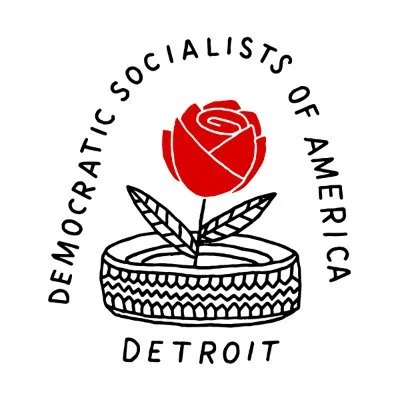

Why I Voted No on the State Budget
By: Dylan Wegela

The following statement was originally posted to social media on October 3rd, 2025 by State Representative for Michigan’s 26th District, Dylan Wegela.
Last night, after a marathon session, the Michigan Legislature passed its General and School Aid Budgets. These budgets were tied to a road funding plan. I ultimately decided to vote no on both budgets, and I hope to outline why in this post. This post is going to be detailed, and I am going to do my best to explain the complexities involved. I urge you to read this entire post, as it is necessary to fully understand why I voted the way I did.
I want to first try and explain our undemocratic and non-transparent budget process. The way we do budgets in Michigan always stinks, but this year was particularly bad.
The Process:
Normally, budgets are passed before July 1st, but this year, Republican Speaker Matt Hall intentionally dragged the budget process out to the October 1st deadline. The deadline approached, and we were facing a shutdown.
It was announced last week that leadership in both parties agreed to a budget deal, and even though they knew all of the details of the budget, they intentionally chose not to share this information with us rank and file legislators. This was done to prevent the public, the press, lobby groups, and legislators from advocating for changes that might blow up the deal.
Several days ago, we were briefed on the toplines of the budget, with some essential information being withheld, and with no way to verify the accuracy of the information.
Yesterday’s session started at 10 am and ended this morning at 4:30 am. I sit here writing this at 1 pm the day after. Exhausted, frustrated, and disappointed.
In the House, we ended up voting on the General Budget around 9:30 pm. It wasn’t until 6 pm that I received the House Fiscal non-partisan summary of the General budget. A 240 page document that is simply impossible to review with any real scrutiny in 3.5 hours. We actually didn’t get the actual line-by-line budget until around 9pm.
We were then forced to vote on this budget almost none of us had seen, with less than 30 minutes to review. This is obviously an intentional tactic used to force votes on a budget. More time to review means more questions to answer. Republican Speaker Matt Hall is the only one with the power to call the vote, and he did.
Call me a radical, but I think that the press and public should have time to look over the budget, provide scrutiny, and ask questions before the vote. At the bare minimum, we should expect that elected representatives should have time to review. To be blunt and honest, I would be surprised if even 1/3 of Reps. even opened the House fiscal analysis to review before voting.
GOVERNMENT SHOULDN’T WORK LIKE THIS.
It is the next day, and I still don’t know everything that is in the budget. I will be analyzing it over the next several days.
I want to stress that both of these budgets and the roads package are interconnected. One doesn’t work without the other. I am going to outline why, despite the shell games played to move money around, this budget simply doesn’t work. I first want to start with the budget implementation bills that make this budget possible.
Budget Implementation Bills:
- Decoupling of the Corporate Income and No Tax on Tips and Over Time:
I voted yes on this bill, and it is one of the most important bills in this equation.
First. “What is decoupling?”
In tax policy, “decoupling” refers to a state choosing not to follow (or only partially follow) certain federal tax rules, even though state tax codes are often based on federal definitions. It’s a way for states to preserve revenue, maintain policy preferences, or avoid unintended consequences when federal tax law changes.
Before this bill, the Michigan Corporate Income Tax (CIT) was coupled with the Federal Government. So when the Big Beautiful Bill Tax cuts were passed, it triggered a tax cut for Michigan corporations. Passing this bill stopped that corporate tax cut from happening, freeing up revenue in the budget.
Additionally, this bill started coupling the state with the federal government for the purposes of removing taxes on tips and overtime, as well as social security. This was a revenue hit, but was offset by the CIT decoupling.
2. Sales Tax & Gas Tax Swap:
These bills exempted gas and several other fuels from sales tax on fuel. Instead, replace it with a gas tax. I voted against exempting these fuels from sales tax.
Here is a simple breakdown of where the constitutionally protected revenue from the Sales Tax goes in Michigan.
Michigan Sales Tax Allocation (6% total)
- School Aid Fund
- General Fund
- Local Revenue Sharing
Exempting fuel from the sales tax means these areas will lose funding. Moving it over to a gas tax ensures that revenue can be used for roads instead.
Schools were set to lose $700 million from this shift. This money was replaced in other parts of the budget (backfilled). Even with this maneuver, I still have major concerns with backfilling school funding from a non-constitutionally protected source.
The local revenue sharing hit is an estimated $64 million. This was not backfilled. Constitutional local revenue sharing is one of the pots of money that cities, counties, villages, and townships receive from the state. At the time of this writing, the amount of money local governments get in this budget is still unclear; it is a bit of a shell game, but more on this later.
24% Cannabis tax increase:
In order to raise money for roads, you need revenue. The road plan proposed a 24% Wholesale tax increase on Cannabis in Michigan. This is estimated to raise $420 Million (Yes that is the actual estimate…), and this money is to be directed into the newly created roads fund. I want to note that some believe that this hit of a tax increase on Cannabis might have devastating effects on the industry. Some also believe that this might force people onto the black market, which could lead to inaccurate revenue projections. Conversations that would have been nice to have, but this was another vote given on minimal notice.
It is also possible that this change will be ruled unconstitutional, due to the fact that the Cannabis ballot proposal that was passed by voters is constitutionally protected. Depending on interpretation, this might mean changes need a ¾ vote to change. (which this didn’t get).
I share these concerns as well, and if this is ruled to be the case or if this is tied up in court, preventing the tax from being collected, the math of the entire budget simply doesn’t work. This would mean local governments would get less road funding than projected under this budget.
I should also be clear that when we voted on this budget, those projections were not available for us to see how each city would be impacted. Even if they were, these projections would be merely speculative.
Even though I had some reservations, I ultimately voted yes on this. I have seen the State Legislature only reduce revenues since being elected. While I think it would be wise to find other sources of revenue, such as taxing the rich. We will never have the roads and schools we deserve if we don’t raise some type of revenue.
Saving Medicaid:
This was another change that was needed because of Trump’s Big Beautiful Bill. I voted yes on this. Here is my best simple explanation of what we did.
Michigan helps fund Medicaid using a tax on health insurance companies called the Insurance Provider Assessment (IPA), but new federal rules say the current setup doesn’t fully qualify anymore. To avoid losing federal money that supports healthcare for millions of residents, we passed changes that allow Michigan to temporarily keep using the IPA while it asks the federal government for permission and works on a new plan. If that permission is denied, Michigan will need to create a different funding system to replace the IPA. The state has up to about three years to make the transition.
Those are the major bills that were required to make the budget work functionally. Now, let’s look at the budgets. I want to start with the School Aid budget, because what they did to this is at the core of why I opposed both budgets.
School Aid Budget:
The Good Stuff!
- Per-Pupil Funding $10,050 ($442 Increase)
— Note: You will see people calling this record funding. We have to stop doing that. Is it the highest it’s ever been? Yes. Does that account for inflation? No. Michigan schools are still severely underfunded. - Free Breakfast and Lunch Protected
— It’s wild to think this would ever be on the chopping block…. - Mental Health and School Safety Funding increased.
- ELL, Special Education line items preserved.
- At Risk Funding Increased
Things that should never happen:
-
An additional $400 million was raided from school aid for Higher Ed (aka a shell game to fund roads)
— This was one of the largest raids on the School Aid fund in Michigan’s History
— There is a bit of a shell game here, but this was done in order to free up more money for roads.
— This isn’t complex. We shouldn’t steal from public schools to fund roads.
In 2018, I helped lead one of the largest teacher strikes in US history to secure $400 million for Arizona’s Public Schools. I refuse to steal that exact same amount from schools today. As I said, these budgets are intertwined. I refuse to support budgets propped up by stealing from our kids.
- $100 million was reduced from MPSERS reimbursement, raising costs for our school districts.
-
Cyber Schools are getting the same Funding as traditional public Schools.
— It simply doesn’t cost nearly as much to run online schools. This just pads the pockets of these “schools”. -
Public Dollars funding private schools.
— This budget allows private schools to access some public funds related to school lunch and school safety.
— I am all for requiring private schools to feed kids and keep schools safe, but it is unacceptable to fund them with public school dollars. This is a slippery slope and brings us one step closer to vouchers and other ways for private schools to steal public funds.
Now onto the General Budget. It is important to note again that the General Budget cannot be funded without stealing an additional $400 million from the School Aid fund. This brings the total amount of School Aid dollars being raided from School Aid to $1.3 billion.
General Budget:
-
Almost every Single Department in the State had its funding cut.
— At a time when we are seeing federal efforts to cut departments across the government, I refuse to support a budget that makes significant cuts across the board for no good reason.
— Republicans will claim they are cutting 2,000 ghost jobs, and Democrats will claim they are cutting no people currently in a position.
— In reality, there are around 1,000 of these positions that our departments are actively trying to fill; in some cases, these are seasonal positions, subject to regular turnover. Now these positions will simply not be filled. Just because a position isn’t filled, it doesn’t mean there wasn’t work that needed to be done. We should not be cutting government jobs for the sake of cutting jobs. -
The Local Revenue Sharing Shell Game
— We are cutting 64 million from constitutional revenue sharing.
— Some types of Local Governments are getting additional road funding
— It was unclear at the time of the vote and of this writing, the exact breakdowns.
— Estimates will be based on the assumption that the Cannabis tax holds up in court. If it doesn’t, the road funding would certainly be less than advertised.
— Like with schools, it is usually a bad idea to cede constitutionally protected funding.
Huge Wins!
- The SOAR (Corporate Handout) Fund has sunsetted (Ended) and will not be funded moving forward.
- I have been fighting to eliminate this funding since being elected! I am happy to see it go.
- Medicaid and SNAP protected (For Now).
- Money for Lead Line Replacement.
Enhancement Grants:
As with every budget enhancement, grants are used to wrangle votes and drum up support for the budget.
Romulus received $1 million for a Fire Truck thanks to Rep. Reggie Miller.
Inkster received $500,000 for the Inkster Cultural Center thanks to Sen. Dayna Polehanki.
Not every rep/district received an enhancement grant. They were limited this year. While I am glad these were added to the budget, it doesn’t change the potential risks of limiting constitutional revenue sharing for all of the cities in District 26, and it didn’t fix the fact that this budget is propped up by questionable math, budget shell games, and, most unfortunately, by robbing even more from our public schools.
This isn’t an easy job, and this wasn’t an easy decision, but I center myself in always trying to do what is right for our District and the long-term health of the State. I am sure there are some who will disagree, and some who will have an honest disagreement with my assessment. There will be others who weaponize it for political victory.
We are in a split government, and things could have been worse. That could be true, but it is equally true that if we had an open and transparent budget process with journalistic and public discourse, it could have resulted in a better budget.
It would have been almost certainly easier for me to fall in line, plug my nose, and vote yes, but I think that is part of the problem right now. We have to stand up and demand better from leaders on both sides of the aisle. Demand better for the people of Michigan. I will never stop fighting to ensure that we have the Public Schools and government we deserve.
In Solidarity,
Dylan Wegela State Representative District 26
Why I Voted No on the State Budget was originally published in The Detroit Socialist on Medium, where people are continuing the conversation by highlighting and responding to this story.
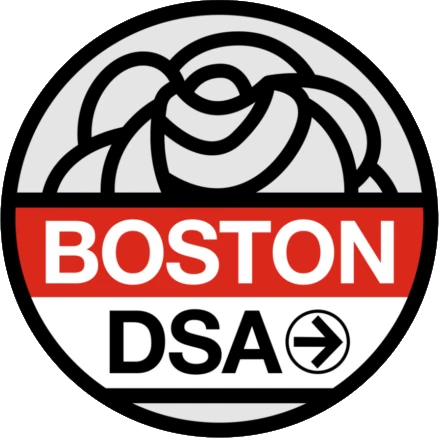

Worcester Medical Residents Persevere Through Fifth Month of Negotiations with UMass

[[{“value”:”

By: James Niedzinski
WORCESTER, MA — About 700 medical residents, represented by CIR-SEIU, are in their fifth month of negotiations with UMass Memorial Healthcare.
Residents are working physicians — often more than 80 hours a week and 24-hour-plus shifts in Worcester — that also specialize in specific fields, like internal medicine or pediatrics. Medical residents agree to work for a hospital, generally three-to-seven years, depending on their speciality.
“When patients come to the hospital for an appointment, they are most likely first seen by a resident,” said Dr., Dipavo Banerjee, a psychiatry fellow at UMass and CIR-SEIU regional vice president. “Residents are at the heart of the care that UMass provides.”
What the Union Fights For
According to Dr. Banerjee, medical residents in CIR-SEIU are fighting for three primary points: reinstated contributions to workers’ medical plan, a meaningful increase in pay that reflects the rapidly climbing cost of living in Worcester, and a housing stipend.
As in many cases, workers’ labor battle is not just a battle for workplace conditions.
The Worcester Telegram and Gazette reports that Worcester is the third most competitive rental market and experiencing a severe shortage of Housing Choice Voucher (HCV) to meet the needs of the most vulnerable fixed-income, low-income, and no-income tenants, against a context of no requirement for landlords to accept Section 8 vouchers. Only 52% of people can secure a lease using a Housing Choice Voucher (HCV). That’s down from 93% about eight years ago.
The tenants’ crisis and lack of homes is taking a toll on medical residents, their families, patients and everyone in between, Banjeree said. Maeve O., a second-year resident, right before she met a patient going into labor after speaking with Working Mass, reported:
Honestly, we’re not even asking (UMass Memorial) to pay us what we’re worth, because we know we’re worth far more than what we’re being paid. We’re just asking for the bare basics to cover our cost of living living and necessities.
Medical Residents or Student-Workers?
UMass Memorial management claims medical residents are students, not physicians. Banerjee said:
We are often the first providers patients see when they come to the hospital for an appointment. We wholeheartedly serve as the frontline caregivers for this region’s most vulnerable – caring for the sick, acutely ill, uninsured, and underinsured – while stretching ourselves to fill gaps in staffing and resources that threaten the health of our entire community.
Other institutions that employ student-workers rely on flawed methodology that also ignores the important first provider role performed by residents. But even more broadly, attacks on student-worker rights have increasingly become an arena for labor battle. Earlier this year, Working Mass reported undergraduate workers at Clark University went on strike in their fight for student-worker rights, utilizing tactics informed by challenges to their own classification as workers they anticipated from the NLRB.
UMass management claims they don’t have the funds to cover cost-of-living raises, housing stipends, or medical plan contributions for student-workers. That stance informs UMass’s refusal to meet worker needs. Meanwhile, according to The Boston Globe, UMass CEO Dr. Eric Dickson’s pay increased 26% in 2023 year-over-year, totaling $3.9 million. UMass Medical Center’s former president, Dr. Michael Gustafson, received a 60% raise, during the same time, totaling $2.8 million.
“At this critical time, hospital systems must prioritize putting resources into patient care, not executives’ pockets,” Banerjee said. “When we invest in those who provide care, we protect the patients and communities who depend on us most.”
Management Pushes to the Indefinite Future
A common medical management response is that residents will make much more money once they graduate and finish their residency programs years down the road, resident Maeve O. said. “To me, and a lot of us, it felt like a slap in the face, because my landlord doesn’t care if I’m going to make a lot of money in two years.”
With rising rents, student loans, other costs, and landlords willing to evict, residents can be priced out of the city. Adding a commute on top 80+ hour work weeks can take its toll on worker morale. Patients want a doctor who is healthy and not burnt out and sleep deprived,” Banerjee said. “A fair contract for residents means improvements to our well-being which are inextricably tied to patients and the care we provide them.”
Bargaining sessions have been tough and emotionally challenging, he added. Nevertheless, residents are building solidarity through collective action across medical specialties. Earlier this year, UMass reached a tentative deal with another union, UMass Food and Commercial Workers Local 1445. Banerjee said that collective effort is a path toward reaching an agreement.
And support has also come from other places. On September 30, Worcester City Council officially passed a resolution urging UMass Memorial Healthcare to reinstate health benefits and bargain a fair contract.
As Maeve O. said:
Our hospital admin folks are good people, trying to do good things for the community… with the financial crisis as of late, it’s been kind of easy to put the residents to the side, despite the fact that we’re the ones that are on the front lines, actually helping patients.
James Niedzinski is a member of Worcester DSA and contributing writer to Working Mass.

The post Worcester Medical Residents Persevere Through Fifth Month of Negotiations with UMass appeared first on Working Mass.
“}]]


Somerville 4 Palestine Defeats Challenge, Divestment Moves to Ballot

[[{“value”:”

SOMERVILLE, MA – On October 6, 2025, the Somerville Elections Commission issued a final decision to overrule an objection to a divestment ballot initiative led by Somerville 4 Palestine, paving the way for city divestment to be decided by the electorate on the November ballot.
Opposition to the ballot measure was led by Judy Pineda Neufeld. The former Ward 7 Councilor decided to not run for reelection in May 2025 before forming the committee that would accept $150,000 in funds raised by the Anti-Defamation League and their allies to defeat the ballot measure to divest the city from genocide. The average donation was over $1000.
In March, Somerville residents nearly overwhelmed Somerville City Hall in their demand for divestment – 700 outside the doors. The council at that time voted to put the ballot question on file, rather than to approve it directly. Six months later, with the opposition now consolidated to challenge the question on the basis of its rules, the Elections Commission scheduled the hearing on Monday, October 6.
A Summer of Canvassing
Somerville 4 Palestine has spent the past six months in a “summer of canvassing.”
After learning that the ballot question would move to the ballot, Somerville 4 Palestine registered as a municipal ballot committee and started building support through bread-and-butter conversations with residents across Somerville.
Organizers spoke to every membership and at every town hall and to every assembly that would have them. They also planned a canvassing operation that spanned the city. Somerville 4 Palestine clipboarded at farmers’ markets, borrowed time at Porchfest stages, grabbed the attention of pedestrians and bikers traversing across the four square miles of the city. Organizers rolled suitcases full of signature sheets from people’s house to house, from Union to Magoun, from Porter to Ball Square.
It was “pure democracy at work,” said one organizer.
In the end, Somerville 4 Palestine turned in 11,000 signatures. The number was more than double the 5200 unique signatures from residents needed to reach the ballot. Organizers indicated there were 288 community members volunteering for the initiative gathering the astounding mountain of signatures.
Even though 8000 signatures were certified by Elections prior to the hearing, Zionists still poured money into their challenge to decertify the “polarizing, divisive” ballot question to divest from genocide. Supporters rallied outside City Hall at 9:15AM before packing the council chamber for the hearing at 10AM.

Challenge in the Chamber
The room quickly reached capacity. Outside, supporters turned away by security stood in the bright sunshine texting others in the chamber. Others wrapped in keffiyehs stood in tense conversation with hecklers who showed up late just to deny Palestine’s existence and dismiss genocide concerns with “we both want humanity for both peoples.”
Nonetheless, the only person whose voice rose to a screaming pitch was yelling about parking.
Inside, every seat was filled. Willie Burnley, Jr., DSA-endorsed city councillor running for Mayor of Somerville, listened to the hearing next to supporters in the audience. DSA city councillor JT Scott took notes, brow furrowed, in a chair on the side of the room. Palestine banners draped from seat to seat as the people watched the hearing.
At 10:45AM, Somerville 4 Palestine began to rebut the arguments of the objection. The Elections Commission listened, impassive, as organizers related each point of the canvassing operation. Organizers also described the step-by-step process through which Somerville 4 Palestine approached the subject to ensure all rules were followed, including the recommendations of city councillors and the city solicitor. At the end of the hearing, the chair motioned for deliberation.
As a Somerville 4 Palestine organizer said during their speech:
There’s no ballot question that isn’t contested. That’s the whole point of elections. This is an exemplification of the democratic process.
The audience murmured for the three minutes of deliberation taken by the commission. Then, suddenly, the chair stood. “We have decided to overrule the objection,” he said. A quick all in favor passed before he slammed the gavel: “so ruled.”
The audience erupted into a storm of applause. Now, the decision on divestment rests with Somerville itself.
Travis Wayne is the deputy managing editor of Working Mass.

The post Somerville 4 Palestine Defeats Challenge, Divestment Moves to Ballot appeared first on Working Mass.
“}]]
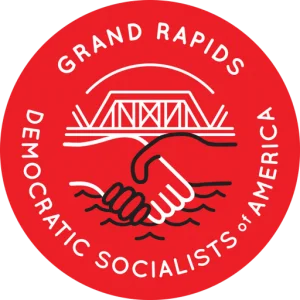

Greenville Book-Talk: “Are Prisons Obsolete?” by Angela Davis

When did prisons become the primary method of justice? What future should abolitionists be working towards? In her short but powerful book, Angela Davis carefully maps out the origins of the prison system, explains the haphazard merging of interests that created the Prison Industrial Complex, and uncovers the inner workings of its racist and misogynistic structures that continue to evade reformation.
Join us for a collective conversation using this landmark book! This will be an open discussion. So bring your unanswered questions, your concerns, and your personal stories. Feel free to join even if you didn’t get the chance to read.
The post Greenville Book-Talk: “Are Prisons Obsolete?” by Angela Davis appeared first on Grand Rapids Democratic Socialists of America.
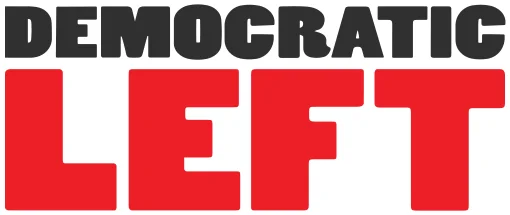

DSA Electeds Arrested Outside Immigration Court, Labor Support Mapped, and More
Chapter & Verse: a summary of chapter news for September 2025
The post DSA Electeds Arrested Outside Immigration Court, Labor Support Mapped, and More appeared first on Democratic Left.
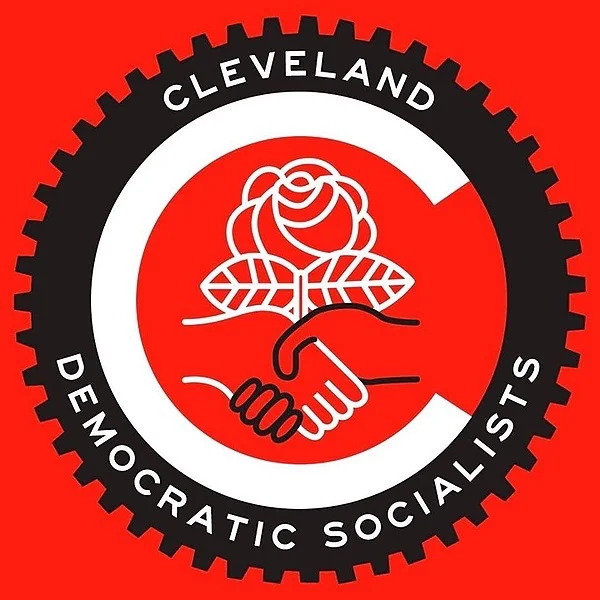

Caucuses in Cleveland DSA
Author: Julie C
The purpose of this piece is to notify Cleveland DSA members that there are now two local caucuses in our chapter and to give some brief history of internal politics in our chapter from a personal and limited perspective. These caucuses do not hold any formal positions of power within our chapter, and in fact are not “officially affiliated” with DSA Cleveland, but they were created in order to bring comrades together based on shared identities and vision.
The Black and Brown (B&B) Caucus was announced at or around the time of the June 2025 General Meeting. Inspired by Detroit DSA’s Black & Brown Alliance, as well as DSA’s national Multiracial Organizing Committee, the purpose of the B&B caucus is to bring together members of color and focus on ways to increase our diversity within the chapter, and working class power in Northeast Ohio’s communities of color. The caucus is not exclusive to members of color and there is no formal leadership or approval process for planning events for the B&B Caucus. If you are interested in this caucus, please reach out to Shay or Emma B on our member Slack.
The Praxis Caucus was announced at the September 2025 General Meeting and its Points of Unity can be found here. This caucus was formed with the intention of bringing members together to form a long-term and proactive vision for DSA in Cleveland and the surrounding areas. While the founding members have ideas on where to start, the current goal is to bring more members together to help develop the vision for our chapter in a way that aligns with our Points of Unity. All Cleveland DSA members are welcome to join meetings and events held by Praxis. If you are interested in this caucus, please reach out to Justin E or Julie C on our member Slack.
Background
When I joined Cleveland DSA (fall 2020), our chapter was very focused on local issues and local organizing. We were not fully plugged into the national org structure or any particular working group/committee in any serious or noticeable way. Also, from my perspective, while there were some political differences among comrades, our membership seemed rather homogeneous and came to consensus regularly. The most obvious difference was the approach to electoral politics and our biggest political “battle” was whether or not to endorse Nina Turner in 2021. This issue drew our largest General Meeting crowd at that time (over 60 members) and the motion failed with about 63% of the vote (it needed 66%).
Since then our chapter has experienced sizable growth in our membership which has naturally magnified the differences in perspective of how to achieve our shared goals. The national organization is more visible and connected to the work that we do through the use of resources available to us as well as some of our members being plugged into the work of different national committees. We also have at least close to a dozen members who belong to various national caucuses. At our October 2024 General Meeting, we passed a much more rigorous endorsement policy and that policy was put to the test this year. A substantial amount of work was put into a project proposal that would see a local DSA member endorsed in their run for city council. That proposal failed 64 nay vs 51 yea after a zealous debate at our May General meeting (5/8/25). The Praxis caucus formed with core members who voted yea on endorsement.
During and after the May General meeting, the political strategies among Cleveland DSA members have been more clearly outlined through internal debates and discussions. To be clear, DSA is a socialist organization. We believe in transitioning our society from capitalism to socialism and our “political” differences stem from what is the best way to do that. And even more specifically at our chapter level, what should our focus be in order to contribute to that outcome. While the differences in political opinion at times seem great, we are very much working towards the same goal.
- There are many lists and articles about the national caucuses but I am not linking any here since there is no “official” list that broadly summarizes them.
The post Caucuses in Cleveland DSA appeared first on Democratic Socialists of America.
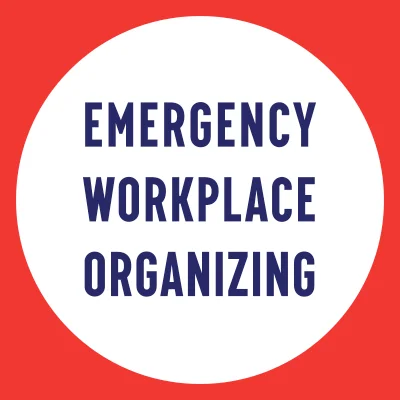

6 questions to ask if your boss threatens to offshore your job
Offshoring threats are common but damaging to campaigns. Learn how secure the facility is and how important it is to the overall company structure.
The post 6 questions to ask if your boss threatens to offshore your job appeared first on EWOC.
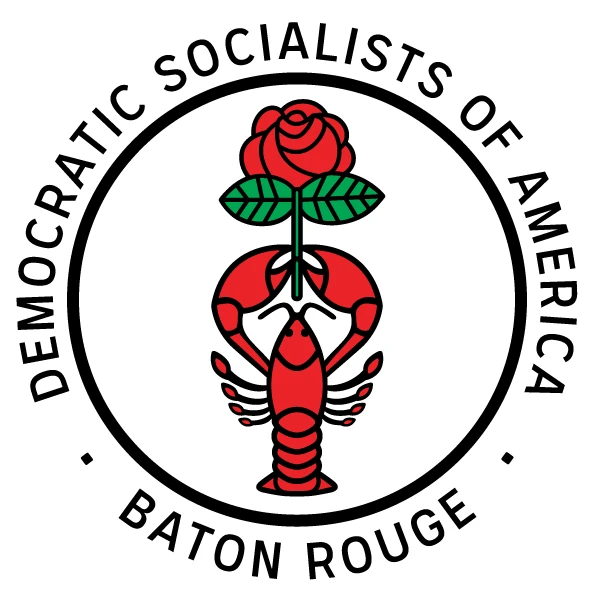

Statement on the Inexcusable Arrest of the Seven Members in Students for a Democratic Society at LSU
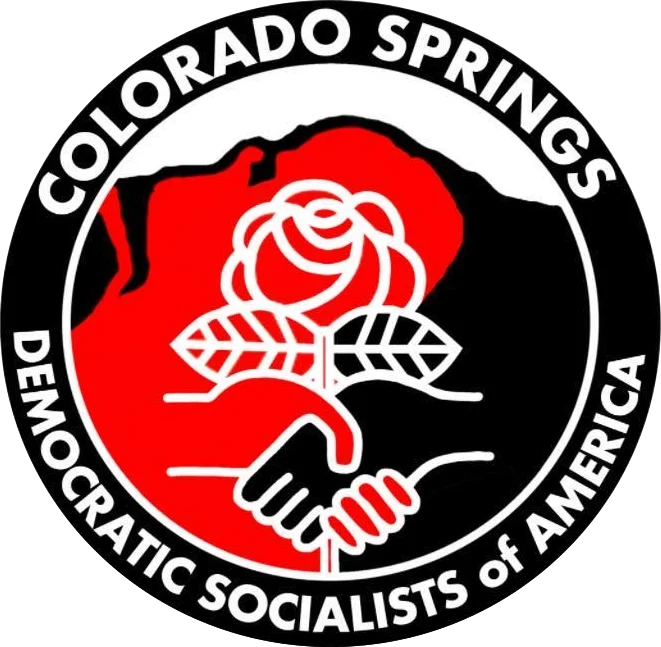

Colorado Springs DSA stands in solidarity with D11 School board candidate Charles Johnson against racist attacks
The Colorado Springs DSA strongly believes in the power of public education to empower and to liberate. We believe that the best people to decide how and what to teach are professional educators. We have been deeply troubled at the consistent interference from the extremist school board in District 11 of Colorado Springs as they deprive teachers of the very agency that allows them to excel. Their decisions are becoming ever more concerning. No novels in high school English classes. Pages physically cut out of health textbooks. And just last week we understand they cut from the curriculum the incredible abolitionist, writer, and orator Frederick Douglass.
Instead of cutting Douglass from the curriculum, we choose to live by his words, “I would unite with anybody to do right and with nobody to do wrong.” We choose to unite with Charles Johnson, a union-endorsed candidate for the school board in D11. We know that he is trying to do right, even as the allies of the extremists now vying for seats on the board play into the shameful, racist tradition of painting Black men as criminals by sending out a mass text showing the mugshot from Charles’s 2020 arrest. True to what we know of him, he was guilty only of, as John Lewis loved to say, making good trouble.
In 2019, a good friend of Charles, De’Von Bailey, was shot in the back and killed by the Colorado Springs Police Department. Charles organized for greater accountability for the department. At COS DSA, we know that Black history is fundamental to American history. Maybe if these extremists spent more time studying it instead of erasing it, they would know how predictable it was that Charles was then singled out for arrest by CSPD. But they don’t know, and we suspect they just don’t care.
We stand in solidarity with Charles Johnson. Charles has been a friend to many of us who are organizers and activists in Colorado Springs, and we know him to be kind and insightful. A product of D11 himself, his commitment to teachers and students in the district is an inspiration. As the Colorado Springs Education Association prepares to strike on October 8th, we call on everyone able to show teachers their support by joining them on the picket line and by standing with Charles and the rest of the union-endorsed school board candidates come the November election. Their only goal is one we all surely share; outstanding public education in this city we love.


Colorado Springs DSA stands in solidarity with the Sumud Flotilla
On 10/1/2025 the Global Sumud Flotilla was intercepted by the IDF while trying to deliver life saving aid to the Palestinians living under a blockade in Gaza. A coalition of organizers, humanitarians, doctors, artists, clergy, lawyers, and seafarers across 57 countries were just off the coast of Gaza, intending to break Israel’s blockade with much needed humanitarian aid, when they were violently intercepted by the IDF.
We condemn this act of violence against a group of peaceful humanitarians working to end the man-made famine imposed upon the Palestinians in Gaza. While Israel continues to actively and mercilessly bomb the Gaza strip to complete its goal of genocide and ethnic cleansing, the Global Sumud Flotilla was a beacon of hope to those waiting for much needed relief. The Global Sumud Flotilla poses no threat. They are unarmed and only carrying supplies needed by the population of Gaza such as baby formula, medical supplies, and food.
To meet a peaceful convoy of humanitarian aid with such violence and little regard for human life is appalling. The response from Italy to try and force the Global Sumud Flotilla to turn away, siding with the IDF and betraying their own citizens, is shameful. The United States is turning a blind eye to the U.S. citizens that have been kidnapped from the convoy while it continues to be involved with and enable the illegal and immoral actions of the illegal occupation known as Israel.
We are living in a moment which, when looked back on, everyone will say they have always been against these violent acts. We must keep hope, because to keep hope is to believe truly and honestly that Palestine will be free.
Israel must release all the hostages they have kidnapped from the Global Sumud Flotilla, they must ensure their safety, and they must allow aid into Gaza. As activist and arguably one of the most famous members of the Global Sumud Flotilla, Greta Thunberg, has said, “I'm not scared of Israel. I'm scared of a world that has seemingly lost all sense of humanity.” We must not lose our humanity and continue to uplift the Palestinian cause as it is just, it is moral, and it is freedom, not just for the Palestinians, but for all of us. Because none of us are free until all of us are free. We stand with the Global Sumud Flotilla, we condemn the violence and kidnapping, and we stand with the Palestinians in their hope to someday soon be truly free.